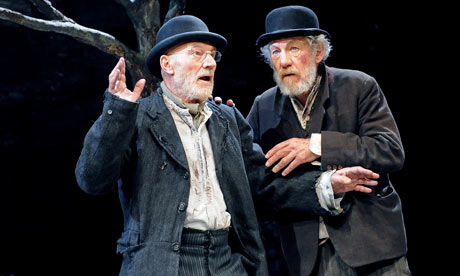Yesterday, two – yes two! – dramatic developments in the theory of prime numbers were announced. Both are – if correct – major theorems in their own right. Both can also be seen as steps towards the very biggest questions in the subject.
(For those who came in late: remember that a prime is a whole number like 7, which can’t be divided by anything except itself and 1. So 6 is non-prime as it is divisible by 2.)
Twin Primes
It has long been observed that prime numbers sometimes come in pairs: 3 & 5, 17 & 19, 29 & 31, 821 & 823,…
The Twin Prime Conjecture asserts, very simply, that this list goes on forever: there are infinitely many pairs of twin primes, meaning pairs (a) and (b) where (b=a+2). This is an old open problem which has left numerous clever people scratching their heads down the centuries. Although the list of known twin primes has grown ever longer (as of 2013, the record holders are 200700 digits long!), no-one has managed to prove it for certain.
Yesterday at Harvard Yitang Zhang announced a proof, not of the full twin prime conjecture, but of a weaker result: that there are infinitely many pairs of primes (a) and (b) where (a < b leq a+70,000,000). Although this bound of 70 million is admittedly slightly bigger than 2, this is still a huge breakthrough, as it is the first time any result of this type has been proven. It establishes for the first time a very deep fact indeed: that even when you look at truly gigantic primes, you are guaranteed still to find some which are close together in an absolute and unwavering sense.
Goldbach’s Conjecture
In a letter to Leonhard Euler in 1742, Christian Goldbach remarked that every even number bigger than 2 can be written as two primes added together: e.g. 4=2+2, 10=7+3, 100=61+59, etc..
Again, a great many people have tried and failed to prove that this simple observation should always hold, although (again) computational work has verified it for all even numbers up to a large value, in this case 4,000,000,000,000,000,000.
Now, another way to state Goldbach’s conjecture is to say that every whole number from 7 onwards (not necessarily even) can be written as the sum of three primes. (It’s worth spending a minute or two thinking about why this is equivalent.)
A weaker statement, then, is that every odd number from 7 onwards is the sum of three primes. This statement, known as Goldbach’s Odd Conjecture, would certainly follow from his main conjecture. But it looks as if we won’t have to wait that long, because yesterday Harald Helfgott claimed a proof!
In fact, Helfgott has shown that it is true for all odd numbers above 10,000,000,000,000,000,000,000,000,000,000, and separately with David Platt has checked numbers up to that limit by computer.
In fact, we’ve known since 1937 that Goldbach’s Odd Conjecture must hold for all large enough numbers, but previously the threshold was over 1300 digits long: way, way too big to be checked computationally. Yesterday, Helfgott finally slammed that window shut.
[Post edited 15th May, see comments]
UPDATE, 19th May. In fact, Peter Rowlett points out that Helfgott is claiming the proof of two weak Goldbach conjectures:
1) Every odd number from 7 onwards is the sum of three primes
and the stronger statement:
2) Every odd number from 9 onwards is the sum of three odd primes (i.e. you can do it without using 2).

Quite a week for math (or number theory at least)! 🙂
Oh, really? How do you express 7 as the sum of three odd primes?
Thought so.
@Anil – you missed the critical words “at most”. (You can write it as the sum of one odd prime: 7.)
Thinking about it with this in mind though, 7 was an unnecessarily large limit, so I’ve edited the post.
Richard, my point is, that is not what the paper claims to prove. It proves that every odd number is a sum of three primes (not necessarily three _odd_ primes). I am not sure how you go from that to “sum of at most three odd primes”.
he said at most three primes man.
No, I agree with Anil – these “at most”s are getting in the way. I’ve amended the post. Thanks.
I’m having trouble with two statements of the weak Goldbach conjecture and whether they are equivalent.
– Does the proof that “every odd integer N greater than 5 is the sum of three primes” imply that “all odd integers greater than 7 are the sum of three odd primes”?
– If so, is there an intuitive way to explain how this is so?
– If not, why do people call both the weak Goldback conjecture, and does the “greater than 7” version remain unproven?
The question with more detail and some discussion is here on Google+:
https://plus.google.com/110966611556332693228/posts/CvYvMxEHWDm
It would be great if you could shed any light on this!
Happily, I have my answer. Helfgott says the two forms of weak Goldbach aren’t equivalent, but it doesn’t matter. Detail in this blog post:
http://aperiodical.com/2013/05/on-equivalent-forms-of-the-weak-goldbach-conjecture/
Aha! Thanks for getting that sorted out Peter.